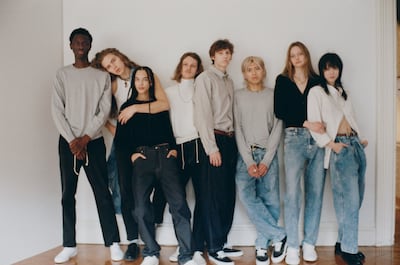
The Business of Fashion
Agenda-setting intelligence, analysis and advice for the global fashion community.

Agenda-setting intelligence, analysis and advice for the global fashion community.

A few weeks ago, Wonny Lee set out to raise a seed round for his Korea-inspired e-commerce fragrance brand, Elorea, which he founded with his wife Su min Park, in 2021.
A veteran of the direct-to-consumer space — he was the head of marketing at sneaker brand Greats, which sold to Steve Madden in 2019 — Lee anticipated the process to be fairly straightforward: Having already raised an initial round and demonstrated Elorea’s proof of concept, next up would be a seven-digit equity investment for the brand from one or more venture capital firms.
Then the market dipped. The S&P 500 fell more than 20 percent since January, staunchly wading into bear territory. That, combined with Russia’s war in Ukraine, inflation and lingering global supply chain woes, has created uncertainty among public and private investors alike. After a record year in venture capital deals in 2021, global funding has steadily fallen in the first half of 2022. In May, venture deals totalled $39 billion, down from November 2021′s $70 billion peak, according to Crunchbase data. When stocks plummet in the public markets, the likelihood of IPOs and other exits for private investors also falls. Several investors BoF spoke to said they’ve already reduced their deal flow this year.
For entrepreneurs like Lee, a pessimistic market makes fundraising difficult and even more demanding than when markets are buoyant. Instead of eyeing $3 million in funding, Lee and his team are now aiming for $1 million.
ADVERTISEMENT
“Valuations have gone down across the board and everything has been contracting,” said Lee. “We’re still optimistic that we’ll find the right investors, but the environment certainly doesn’t help.”
Later-stage companies are finding conditions even tougher, experts say, because many raised funding in 2021 with high valuations and low expectations from investors. Now, as they seek additional capital to continue pursuing growth plans while shoring up balance sheets, the barrier is higher.
Compared to last year, investors at any stage are looking for stronger growth, higher margins and a “more bulletproof business overall,” said Bill Detwiler, managing partner at Fernbrook Capital, an investment firm that backed the likes of Violet Grey, La Ligne and Tory Burch. Fernbrook will be closing a few deals by the end of July but doesn’t have more potential investments on the table for now.
“There’s going to be a fair amount of carnage in the next 12 to 18 months,” Detwiler told BoF. “That’s why we’re laser-focused on the business fundamentals. It could be the best product in the world but if the founders don’t have the discipline to run a profitable business, it would be really hard for us to invest.”
Still, the cash is there. Private equity investors, for instance, recorded an unprecedented level of undeployed capital in February — $1.78 trillion, according to Preqin, an investment data company.
“Investors are more rational and thoughtful,” said Arash Farin, managing director at The Sage Group, an investment bank that has advised brands like Rowing Blazers, Frankies Bikinis and Bombas. “Still, not just strategic but large scale private equity players are going after younger companies in a much more aggressive way.”
There’s going to be a fair amount of carnage in the next 12 to 18 months.
To fundraise effectively in a bear market, founders must strategically target the right investors, present an airtight business plan, consider alternative forms of investment and prioritise survival above all else — even if that means taking less cash at a lower valuation.
“Good companies are going to emerge in any market and history shows that markets like this can be fertile ground for starting the next generation of great new companies,” Farin said.
ADVERTISEMENT
Michael Colovos conceived the idea for his denim brand, Unified Unlimited, when he emerged from lockdown in 2020, unable to find jeans that were both stylish and comfortable. But before approaching investors, the denim industry veteran solicited feedback from his own network of friends, former coworkers and professional associates. From there, he was introduced to Melanie Travis, founder of DTC swimsuit brand Andie, who became an advisor. Together, the two fine-tuned their pitch, preparing for scrutiny in any component of the business, and only then went to investors.
By tapping into his network first, Colovos gathered feedback to hone his pitch and business plan. “One thing that was important to me was just making sure I had all my bases covered,” he said. “If you can navigate the questions that are being asked by investors, it sharpens your deck. If you’re not able to do that, maybe you’re getting into a market that’s too crowded.”
Founders often choose to raise their initial capital from friends and family, who may be more willing to support a loved one’s new venture, regardless of economic conditions.

When Elorea was preparing to launch two years ago, it received its first investments from Lee’s contacts in the Korean-American venture capital community, he said. With their funding and guidance, the company then secured a commitment from Strong Ventures, a venture firm focused on supporting Asian American entrepreneurs.
“It’s called a friends-and-family round for a reason,” Lee said. “You have to convince your closest [people] that this business is viable. It’s a small amount of capital but you’re able to prove that your thesis is correct.”
Some founders move quickly and cast a net far and wide to court investors, an approach that can backfire. Finding investors on LinkedIn and messaging them en masse, for instance, might not yield the most desired results.
Caley Adams, an angel investor and owner of design agency Wildes District, said she has received direct messages from entrepreneurs on LinkedIn who failed to research her or her company’s background.
“I recommend you to look at the investments [that] specific investors have done,” Adams said. “I usually back women-led companies, and I’ve gotten a few messages from men who are like, ‘This is a Red Bull-type energy drink for dudes,’ and I’m like, ‘I don’t know why you would think this is a good fit.’”
ADVERTISEMENT
Rather than cold calling investors, Adams recommends signing up for newsletters published by venture capital firms, following them on social media, and joining online networks like that of branding newsletter Leanluxe or the 10th House, a professional collective dedicated to female founders and investors.
Brands can also consider looking for funds that recently closed a round of capital, perhaps in markets that are less popular, said Lindsey Taylor Wood, founder and chief executive of The Helm, a venture firm and VC membership community that connects angel investors with one another as well as with potential targets.
“We tell our companies to make a list of all the funds you can find in the press in the last 12 months who have just raised funds, who don’t have the larger portfolios to support yet,” Wood said. “They have a lot of dry powder — so think about making a case for them.”
A “no” can sometimes mean “not yet.”
Investors like Detwiler will keep the door open for compelling companies that aren’t suitable for the environment today but could make a good investment down the line. “We like meeting founders early in the journey and getting to know them, watching them confront hurdles,” he said. “We like to help them [get into] our network even before the investment to build the relationship.”
Stay actively connected to friendly investors.
Colovos, too, had reached out to an investor for whom his first pitch missed certain points but was won over by a second, more comprehensive pitch — one that included input from his new advisor.
“Stay actively connected to friendly investors,” said Alex Song, an investor and co-founder of Innovation Department, an incubator for consumer brands. “Hearing their perspective will help ensure that you’re in tune with the fundraising environment. It also helps to provide updates on progress with the business through the downturn so investors are tracking you and prioritising you for a potential investment.”
But don’t be too persistent, Detwiler warned. “If you’ve been told ‘no,’ and you keep asking, that’s going to poison the relationship.”
In today’s tumultuous market, the ideal investment isn’t guaranteed. Founders must be ready to compromise or have a Plan B, like Lee’s $1 million “bridge” fundraise rather than his planned $3 million full round.
A bridge round refers to a capital raise in between formal fundraises, such as a Series A or Series B. Founders could also consider debt financing, or more alternative tactics such as crowdfunding or opting for a revenue-share agreement with firms like Clearco, which provides funding for consumer-facing companies in exchange for a flat percentage fee rather than equity — akin to a low-interest loan — or even business grants. Many companies are exploring combinations of several options, such as convertible debt, a form of loan that’s repaid through equity rather than money.
“People are getting creative around all types of different capital,” said Jenny Gyllander, former VC investor and founder of Thingtesting, a DTC-focused product discovery and reviews platform. “But if you can raise a smaller round at this point, that’d be a good idea too.”
In the event that securing any investment won’t happen today, the priority will be to preserve whatever cash a start-up has on hand. This means reducing or sharply controlling costs, including marketing, raw materials and even company headcount.
“Do a line-by-line analysis of every subscription, software, employee, consultant, expense item you have and ask yourself if this is absolutely necessary,” said Song. “What can you do to reduce burn today?”
Do a line-by-line analysis of every subscription, software, employee, consultant, expense item you have and ask yourself if this is absolutely necessary.
The goal, he added, is to increase the amount of time a company can continue operating before cash runs out by at least 30 percent. “You can’t count on the fundraising marketing being there when you need it,” he said.
Another way to save on costs may be to offer equity in lieu of payment to service providers. Adams, of design studio Wildes District, said she has accepted part-equity, part-cash deals from brands seeking her digital design services. “It makes me want to do better work for me,” she said.
Ultimately, survival is the name of the game.
“A lot of founders have never gone through a recession before and it will be a new awakening,” said Lee. “But getting through it will do you wonders.”
Nascent brands often seek external capital to fuel future growth — or simply stay afloat. But how much money should start-ups really be raising, when and from where?
For every Reformation, there are a dozen Outdoor Voices. Most apparel companies will have better luck looking beyond Silicon Valley for funding.
Venture capital syndicates and online communities with young investors are changing the landscape for brands and founders.

Cathaleen Chen is Retail Correspondent at The Business of Fashion. She is based in New York and drives BoF’s coverage of the retail and direct-to-consumer sectors.
The Los Angeles-based accessories label has been a well-kept secret in the industry, but founders Yang Pei and Stephanie Li are hoping to change that through new acquisitions, opening brick-and-mortar stores and using AI to speed up the design and production process.
Designer Carly Mark sparked conversation about what it takes to make it as an emerging designer in New York when she announced she was shutting her ready-to-wear line and moving to London. On Thursday she held her last sample sale.
To stabilise their businesses brands are honing in on what their particular consumer wants to buy, introducing new categories and starting conversations.
That’s the promise of Zellerfeld, a 3D-printing partner to Louis Vuitton and Moncler that’s becoming a platform for emerging designers to easily make and sell footwear of their own.